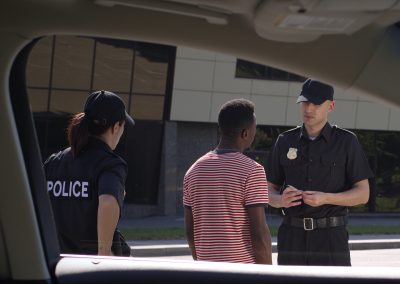Most tactical officers are probably familiar with the text Crisis Negotiations by Michael McManus and Wayman Mullins. That book is now in its fifth edition and has become a staple for crisis/hostage negotiations teams.
One of my past tactical command instructors, Thomas Strentz, Ph.D. (FBI, ret.) penned two of the most often-quoted texts on the subject, the acclaimed Psychological Aspects of Crisis Negotiations and Hostage/Crisis Negotiations, 2nd ed. I’ve used both when reviewing tactical incidents as part of my expert witness work.
I recently was exposed to another text which I believe will greatly benefit crisis intervention and hostage negotiations teams or other specialized units that are tasked with dealing with barricaded subjects, hostage takers or others in crisis where law enforcement is asked to intervene.
Shapeshifting: Effective Scenario Training for Crisis/Hostage Negotiation Teams by Ellis Amdur and Sgt. Lisbeth Eddy (ret.) is not a beginner’s book. Released this past year, it is designed for experience HRT teams to hone their skill sets in between call-outs. Essentially, this training guide presents HRTs, CITs, SRTs or other crisis management teams with a series of unpredictable crisis scenarios. These scenarios, many honed from the authors’ own experiences, range from the so-called mundane (i.e., an adult family member holding his spouse hostage) to a scene that may have come right out of “America’s Most Wanted” (i.e., one in which a 13-year-old boy was lured away from his home and taken to another location by a presumed pedophile). Others are extremely intricate and may involve coordination with SWAT and/or tactical unit’s assistance.
Each scenario (or chapter) concludes with an “After Action Critique” or “Checklist” so the players can evaluate if the goals or objectives were met. Use of this training guide will require work—on both the part of the unit members and the role players. In fact, all 30 scenarios require the use of role players and most scenes involve multiple role players.
Several of the scenes call for the input of a psychological consultant. The manual stresses that this consultant should be brought into the situation “cold” just like the officers.
The authors of this workbook are both experienced crisis negotiators. Co-author Amdur has a BA from Yale and an MA from Seattle University both in Psychology. A graduate of the FBI’s Crisis Negotiation Course, he has consulted with a number of HRTs and has authored ten books on handling EDPs and communicating with the mentally ill.
Sergeant Eddy holds a BA from the University of Washington and served for 31 years with the Seattle, Wash. Police Department. Sgt. Eddy has extensive credentials as a Crisis Negotiator and was also instrumental in developing Seattle’s Crisis Intervention Teams.
One entry that appeared early in the text, and something that I found extremely beneficial, was the biography of four law enforcement professionals, two from Washington state, the others from Illinois and Missouri respectively, who reviewed the manuscript before it was published. These four individuals, who have a combined more than a century of tactical command experience, have lent their names to the concepts and tactics that are outlined within the 200 pages that comprise this excellent workbook.
As someone who has graduated from two Tactical Commander Courses, I found this unique scenario-based training manual to be an outstanding resource.
A word of warning though is in order: Your role players will be required to work as hard as your officers at making these scenarios as realistic as possible. Choose and train them carefully. Small agencies may elect to use acting students or amateur actors from a local theater company. However, if that’s not possible and your only option is other officers, they should not be known to any of the CIT or HNT members going through the training.
As a trainer, I’d strongly recommend this guidebook as an excellent in-service training resource for CITs and HRTs alike.
The book is available for $59.95 through www.edgework.info.










0 Comments